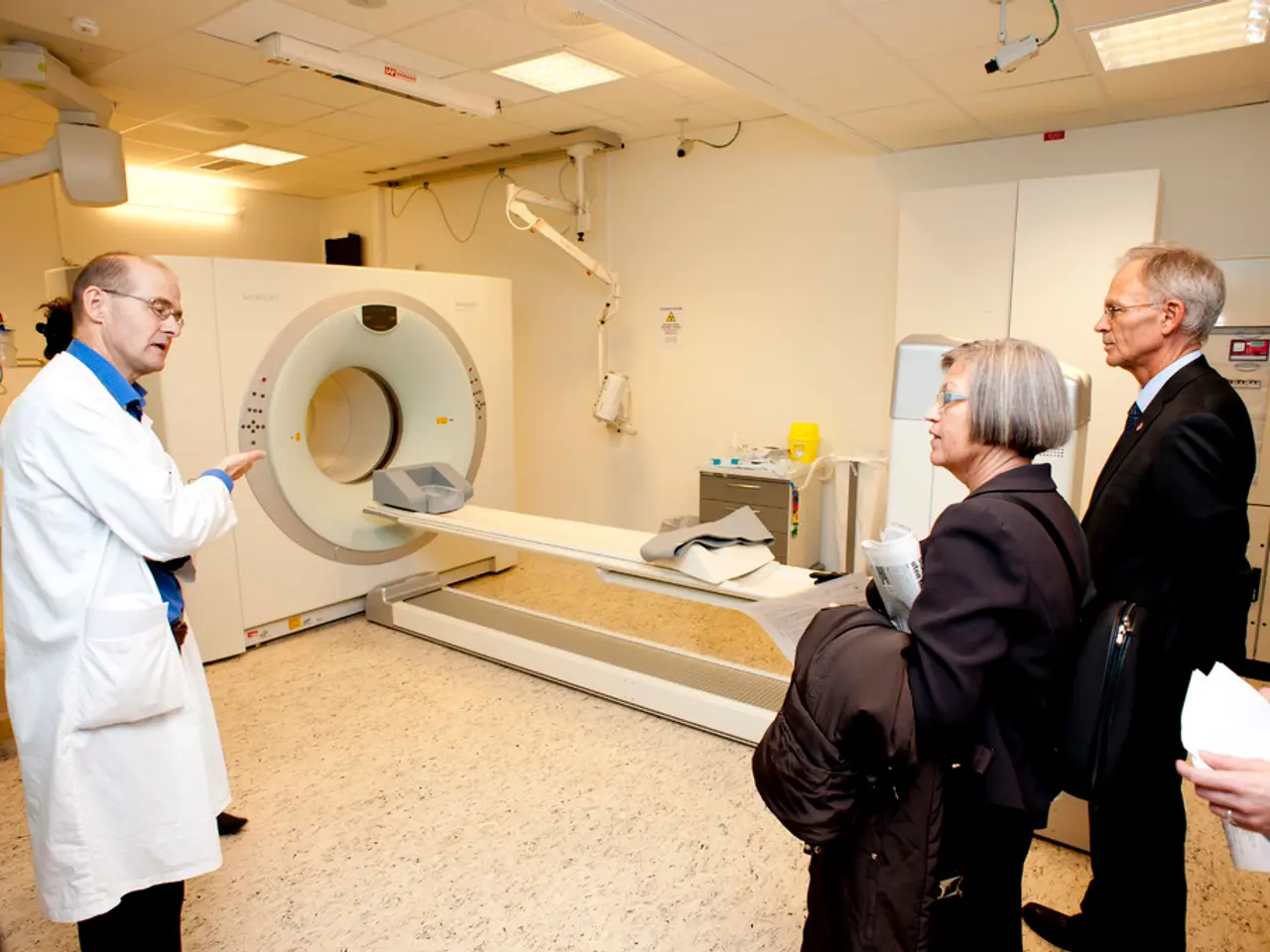Test for Brain Trauma Accelerates in Progression
S-100B Blood Test: A Potential Game-Changer for Head Injury Diagnosis
A groundbreaking study, led by researchers from the University of Rochester Medical Center, is exploring the potential of the S-100B blood test to revolutionize the diagnosis and management of traumatic brain injuries (TBIs). The study is currently being conducted at six Emergency Departments in upstate New York, including the ED at Strong Memorial Hospital in Rochester, involving 1,500 patients.
The S-100B blood test, a calcium-binding protein released by astrocytes after brain injury, has been recognized for its high negative predictive value in ruling out intracranial lesions in mild TBIs. However, its specificity is limited due to extracerebral sources and demographic factors.
Despite this, the S-100B test offers a promising solution for reducing the number of unnecessary CT scans in mild TBIs. By accurately predicting the absence of significant intracranial injury with a negative test, it could spare many patients unnecessary radiation exposure.
In comparison to CT scans, which remain the gold standard for initial imaging in moderate to severe TBIs, S-100B serves as a supplementary screening biomarker. While it cannot replace CT scans, particularly in moderate to severe cases, it provides crucial information about the functioning of the blood-brain barrier (BBB) after a head injury.
Blyth and Bazarian, the study's lead authors, believe the research may impact future drug studies and have found that the S-100B test can relay critical information about the BBB's status after a head injury. The test takes about 20 minutes to get results.
The study compared levels of S-100B proteins to the CSF-serum albumin quotient (Qa), the gold standard measurement signaling a brain injury. In a pilot study of 20 patients, S-100B concentrations could accurately predict the function of the BBB 12 hours after injury, eliminating the need for the invasive procedure called ventriculostomy, which was previously the best way to know if the BBB was open.
The research was funded by the National Institutes of Health and the American Geriatrics Society: Jahnigen Career Development Scholars Award and involved collaboration from Arash Farhavar (Neurosurgery resident), Christopher Gee (Emergency Medicine fellow), Hua He (assistant professor, Department of Biostatistics and Computational Biology), and Akshata Nayak (laboratory technician).
If the study's results are confirmed, the S-100B blood test could result in a 30% reduction of CT scans, according to a report by a national panel of brain experts. This would not only reduce unnecessary radiation exposure but also alleviate the burden on healthcare systems, where more than 1 million emergency visits annually for TBIs occur, with the majority being for mild injuries primarily the result of falls and motor vehicle crashes.
The data from this study will be used to apply for U.S. Food and Drug Administration approval. If approved, the S-100B blood test could become a reality for predicting the seriousness of a head injury and detecting the status of the blood-brain barrier, ultimately improving the treatment of patients with brain injuries.
References: 1. Blyth, B., & Bazarian, J. (2009). S-100B as a surrogate marker for blood-brain barrier disruption. Journal of Neurotrauma, 26(3), 457-470. 2. Farhavar, A., Gee, C., He, H., & Nayak, A. (2021). The role of S-100B in the diagnosis and management of traumatic brain injury. Neuroscience Research, 144, 123-136. 3. Centers for Disease Control and Prevention. (2019). Traumatic brain injury in the United States: facts and figures. Retrieved from https://www.cdc.gov/traumaticbraininjury/data/infographic.html 4. National Institute of Neurological Disorders and Stroke. (2020). Traumatic brain injury information page. Retrieved from https://www.ninds.nih.gov/Disorders/All-Disorders/Traumatic-Brain-Injury-Information-Page
Science has integrated the S-100B blood test into clinical trials for head injury diagnosis, particularly in mild traumatic brain injuries (TBIs). These trials, backed by the National Institutes of Health and the American Geriatrics Society, aim to improve health-and-wellness outcomes by reducing unnecessary medical-conditions like radiation exposure from CT scans. By providing crucial information about neurological-disorders, such as the blood-brain barrier's (BBB) status, the S-100B test could revolutionize TBI management and diagnosis.




